A pretty one here, an unusual one there: Fifty years and 20 teapots later, Portland resident Phyllis de Fano’s fun, eclectic collection is something to spout about.
Phyllis de Fano is not the kind of person to lay down $10,800 on a sterling silver, Art Nouveau-style teapot at Tiffany & Co.
Nor would she likely scour antique dealers and garage sales hunting for a c. 1875 Chinese export miniature famille rose teapot.
Collectible teapots aren’t her thing, yet she has a small teapot collection that means a lot to her – showing that anyone can have fun amassing their favorite kitchen items in various styles, ages and colors.
“I never started out to be a collector,” said the 73-year-old resident of Portland’s Woodfords neighborhood. “It really just happened.”
De Fano’s collection is small – about 20 teapots – but she has gathered it over 50 years. A few of the teapots are antique gems passed down from her grandmothers, but most she found in supermarkets and other places where an unusual or attractive pot just caught her eye. Some cost $10 or less. “I know there are people who have really dazzling collections, and mine is not,” she said. “What appealed to me were things I would really use or things that had some sort of meaningful association with them.”
One of her favorite teapots is a simple royal blue pot. It was given to her by a friend in New York who was going to throw it away because it dribbles.
“She said, ‘If you want that pot, you take it,’ ” de Fano said. “So I took it. Now I use it only occasionally, but every time I do – and I do use a dribble saucer – it dribbles, and it makes me smile and think of Suzanne.”
De Fano started drinking tea at age 21 because she hated coffee but thought it was time to graduate to “an adult drink.” She was a librarian and a middle school teacher for a time, but spent most of her career as an administrator working for scientists in university settings. (Think theoretical astrophysicists and microelectronics labs.) Most recently, she worked in literacy – a lifelong passion of hers – and was director of a literacy volunteer program here in Portland.
De Fano discussed some of the items in her teapot collection over a cup of Dublin breakfast tea.
 De Fano calls this whimsical rabbit teapot one her “smile pots.” The little fella appears to be practicing yoga – warrior pose, maybe? – and holds a buttercup by its stem, as if it were a garden hose. She thinks she got him at the supermarket, but this is no ordinary bunny. What makes this pot special is the determined look in the black eyes of the unsmiling rabbit. He means business. De Fano likes the detail on the bottom of his foot (you can see the pads) and the asymmetrical shape of the ears. Another fun thing about this “silly, silly rabbit” is a turn of his head gives him an entirely different look and expression.
De Fano calls this whimsical rabbit teapot one her “smile pots.” The little fella appears to be practicing yoga – warrior pose, maybe? – and holds a buttercup by its stem, as if it were a garden hose. She thinks she got him at the supermarket, but this is no ordinary bunny. What makes this pot special is the determined look in the black eyes of the unsmiling rabbit. He means business. De Fano likes the detail on the bottom of his foot (you can see the pads) and the asymmetrical shape of the ears. Another fun thing about this “silly, silly rabbit” is a turn of his head gives him an entirely different look and expression.
“I bought him at a particularly difficult time in my life,” de Fano said, “and I put him on my kitchen counter so when I came in from the garage he would be one of the first things I saw. He is so silly he makes me smile every time I look at him.”
De Fano’s absolute favorite teapot is this “engineering miracle” she found in upstate New York when her brother-in-law insisted on stopping at a yard sale in “the real boondocks.” The pot has a little shelf inside where the loose tea or tea bag goes, above the water. Lean the pot back, spout up, to steep the tea. It’s stamped Kronach Germany, and a little Internet research showed it’s a Rosenthal Blue Ivy teapot that is apparently very rare. One has sold on eBay for $174.99, and as of this writing another one is up for bid on the same site for $149.99. De Fano has no idea if her teapots have any monetary value, but she knows which one she values most. “If I could only keep one pot,” de Fano said, “this is the one I would keep.”
when her brother-in-law insisted on stopping at a yard sale in “the real boondocks.” The pot has a little shelf inside where the loose tea or tea bag goes, above the water. Lean the pot back, spout up, to steep the tea. It’s stamped Kronach Germany, and a little Internet research showed it’s a Rosenthal Blue Ivy teapot that is apparently very rare. One has sold on eBay for $174.99, and as of this writing another one is up for bid on the same site for $149.99. De Fano has no idea if her teapots have any monetary value, but she knows which one she values most. “If I could only keep one pot,” de Fano said, “this is the one I would keep.”
 This striking teapot with black trim has a lavender-colored flower on one side and yellowish-orange flower on the other. De Fano thinks it came from her grandmother’s estate (her father’s mother). It shows its age with some crackling, but there’s no maker’s mark so no way to know how old it is definitively. Despite its age, de Fano still uses it. “If you don’t use them, the little crinkles in the finish, in the ceramic, get dirty,” she said. “But if you use them and are careful, and wash them in warm, sudsy water, they stay clean. So you should use them, in my opinion. If you’ve got something you’re not using, maybe you should get rid of it.”
This striking teapot with black trim has a lavender-colored flower on one side and yellowish-orange flower on the other. De Fano thinks it came from her grandmother’s estate (her father’s mother). It shows its age with some crackling, but there’s no maker’s mark so no way to know how old it is definitively. Despite its age, de Fano still uses it. “If you don’t use them, the little crinkles in the finish, in the ceramic, get dirty,” she said. “But if you use them and are careful, and wash them in warm, sudsy water, they stay clean. So you should use them, in my opinion. If you’ve got something you’re not using, maybe you should get rid of it.”
 This teapot may be the oldest in the collection. A dancing girl in relief adorns the pot on one side; on the other are two girls playing lyres and doing other things the ancient Greeks or Romans might have done in a vineyard. The handle, made of bamboo or grapevine, is fragile and has been repaired a couple of times. De Fano believes the pot came from her other grandmother, her mother’s mother.
This teapot may be the oldest in the collection. A dancing girl in relief adorns the pot on one side; on the other are two girls playing lyres and doing other things the ancient Greeks or Romans might have done in a vineyard. The handle, made of bamboo or grapevine, is fragile and has been repaired a couple of times. De Fano believes the pot came from her other grandmother, her mother’s mother.
“I’ve only used that once or twice,” she said, “and I used to for a family thing, because I thought my sisters would enjoy it.”
 De Fano found this duck at the Joyce Chen market in Cambridge, Mass. She likes the simple coloration and the stylized look of the bird. She walked past it for weeks before she finally bought it. “I’m not a collector in the sense that I go out looking for teapots,” De Fano said. “When I find one I really like, I say to myself, ‘My gosh, do I really need another teapot?’ ”
De Fano found this duck at the Joyce Chen market in Cambridge, Mass. She likes the simple coloration and the stylized look of the bird. She walked past it for weeks before she finally bought it. “I’m not a collector in the sense that I go out looking for teapots,” De Fano said. “When I find one I really like, I say to myself, ‘My gosh, do I really need another teapot?’ ”
This is one of two Japan ware tea sets that De Fano got from her grandmother’s estate. She also  has plates, cups, saucers, and a couple of serving dishes for the same set. Mount Fuji is portrayed in a different way on each piece. De Fano and her ex-husband spent a summer in Japan in 1966, including a week in Kyoto, where she purchased a beautiful glazed teapot that was shades of grey, pink and white. It was made so that the more she used it, the more the glaze changed. Unfortunately, she broke the lid to the teapot sometime during the 1980s. “I was crushed,” she said. “I still have the pot, but it’s packed away.”
has plates, cups, saucers, and a couple of serving dishes for the same set. Mount Fuji is portrayed in a different way on each piece. De Fano and her ex-husband spent a summer in Japan in 1966, including a week in Kyoto, where she purchased a beautiful glazed teapot that was shades of grey, pink and white. It was made so that the more she used it, the more the glaze changed. Unfortunately, she broke the lid to the teapot sometime during the 1980s. “I was crushed,” she said. “I still have the pot, but it’s packed away.”
 This is the second of two sets of Japanese tea sets De Fano inherited from her grandmother. This one is decorated with geishas. She believes both sets may date from around World War I. De Fano isn’t sure what she will do with these heirlooms. She may leave them to her nieces, but wonders: “Kids today, do they really want something that’s old? I don’t think they do anymore.”
This is the second of two sets of Japanese tea sets De Fano inherited from her grandmother. This one is decorated with geishas. She believes both sets may date from around World War I. De Fano isn’t sure what she will do with these heirlooms. She may leave them to her nieces, but wonders: “Kids today, do they really want something that’s old? I don’t think they do anymore.”
Send questions/comments to the editors.


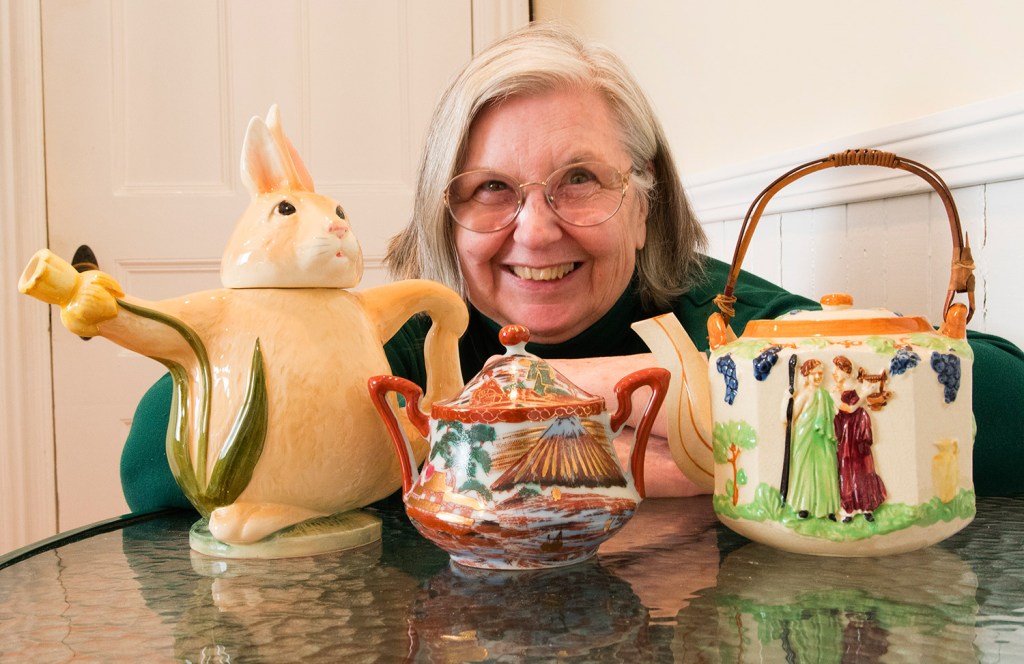
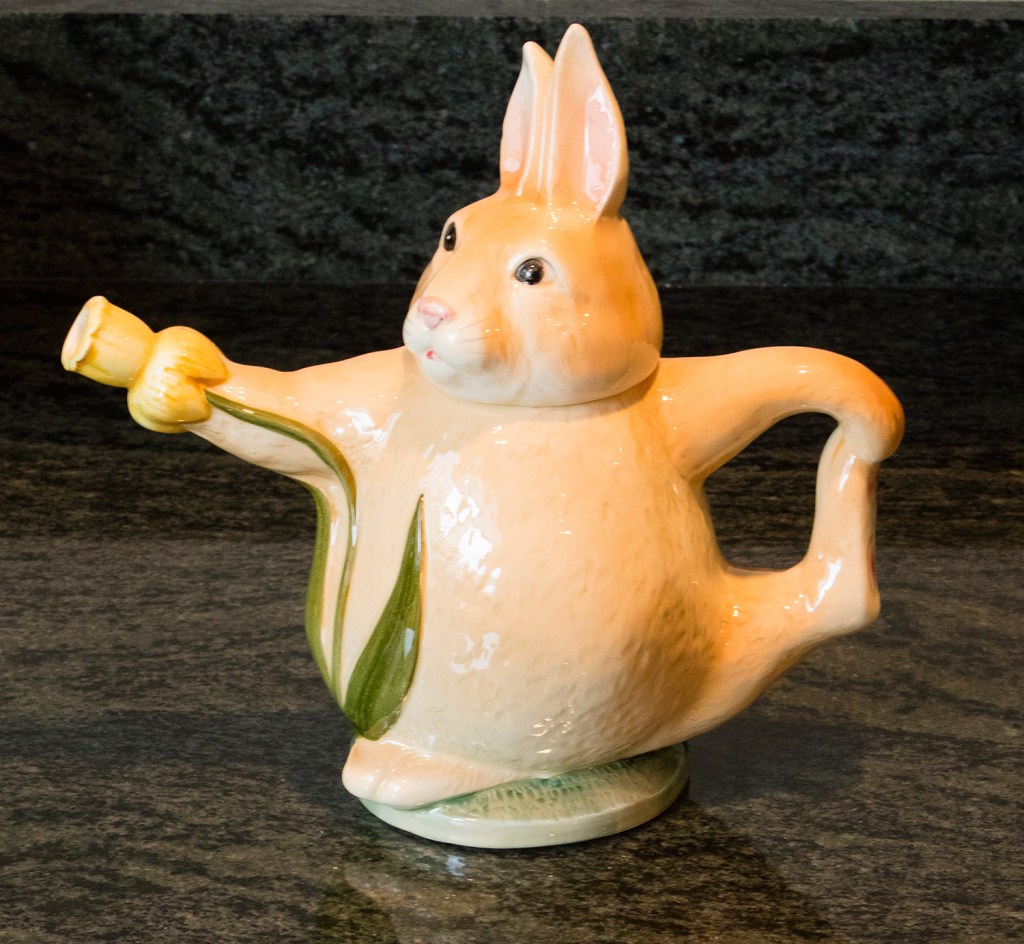
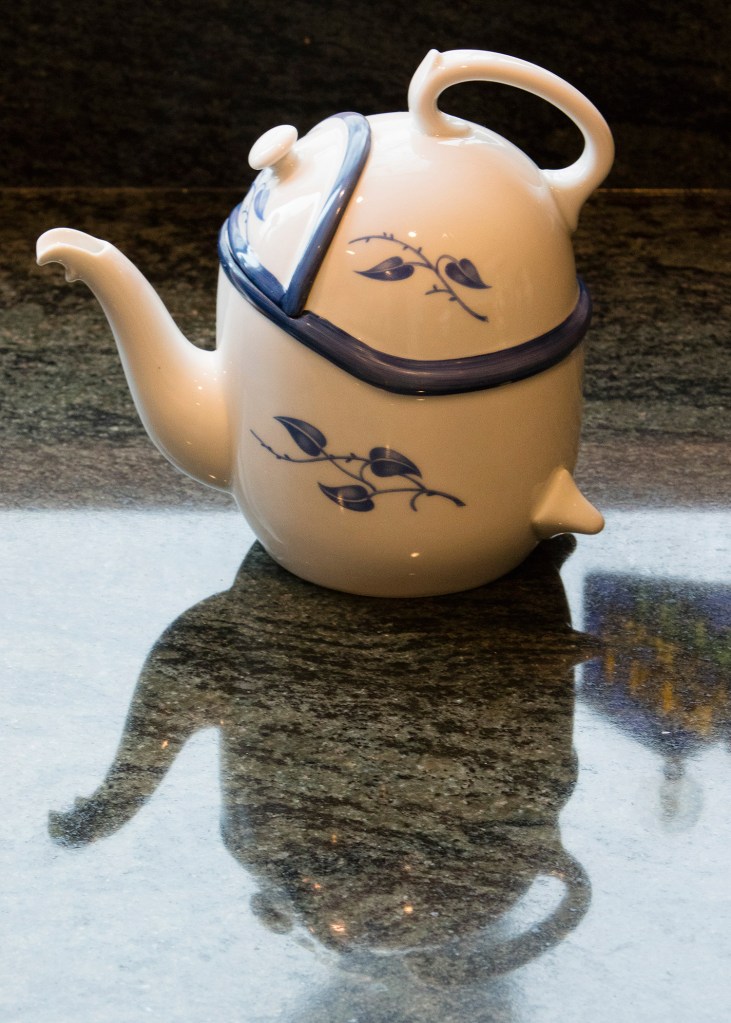
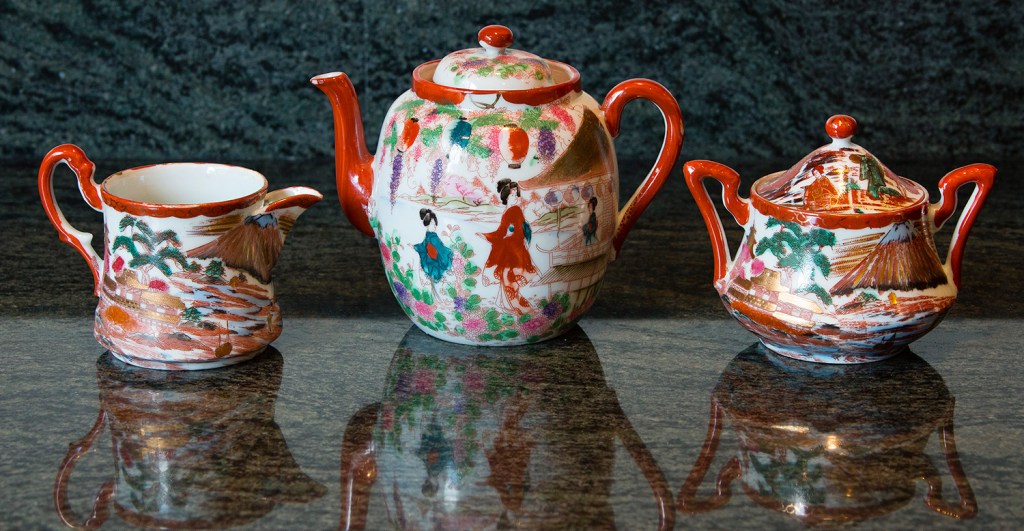
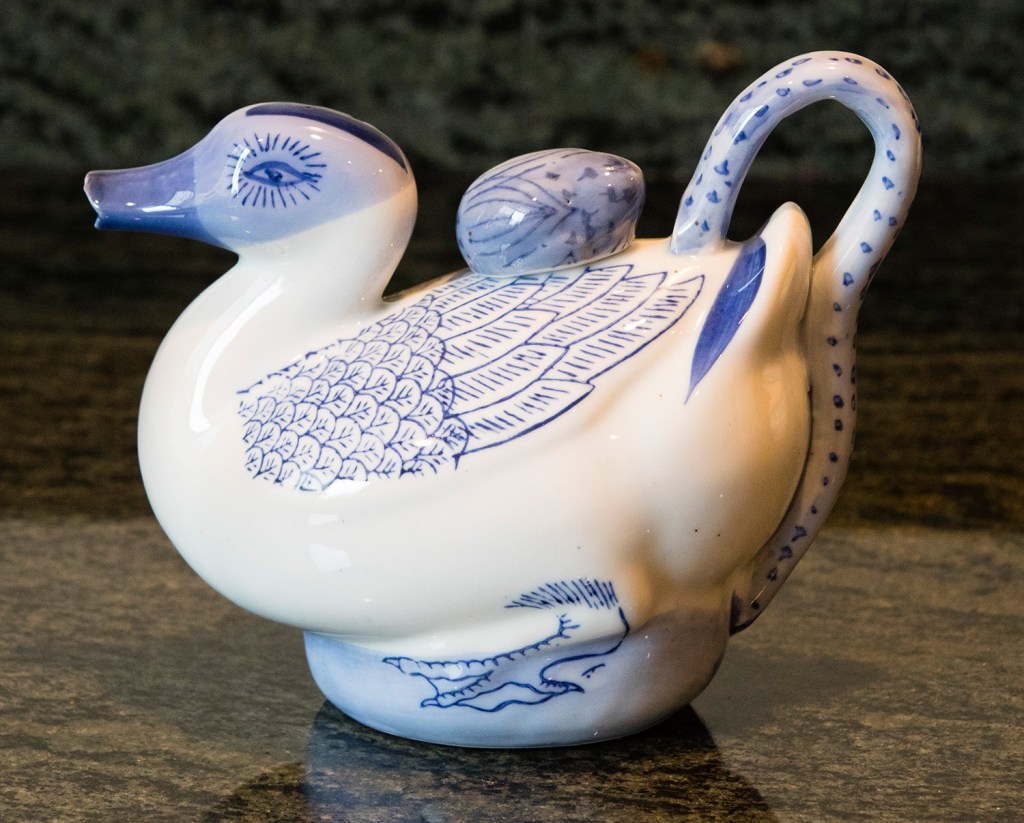
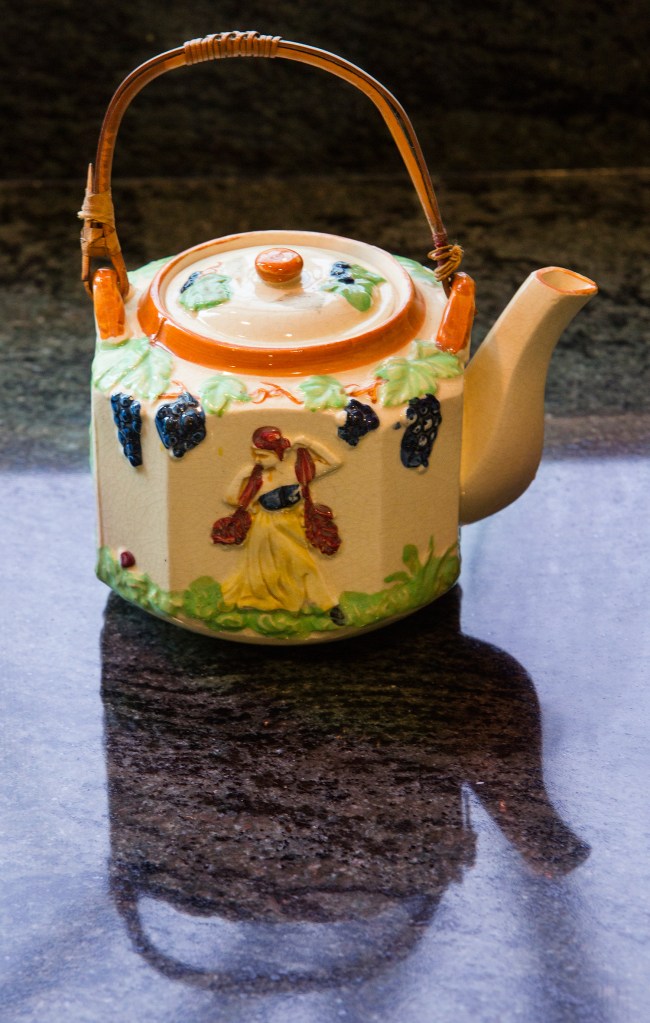
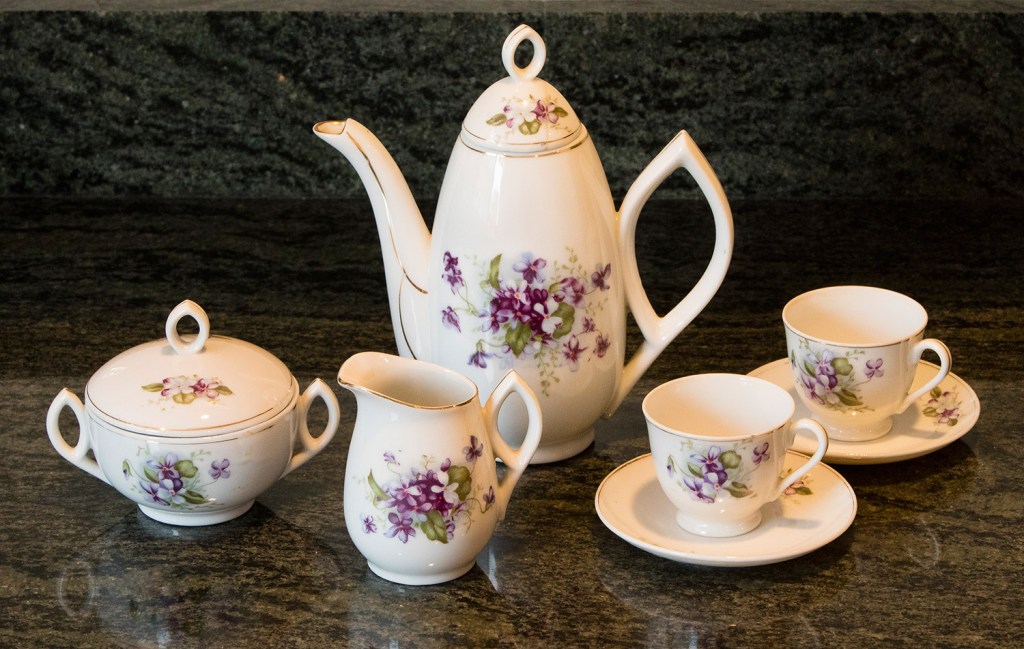
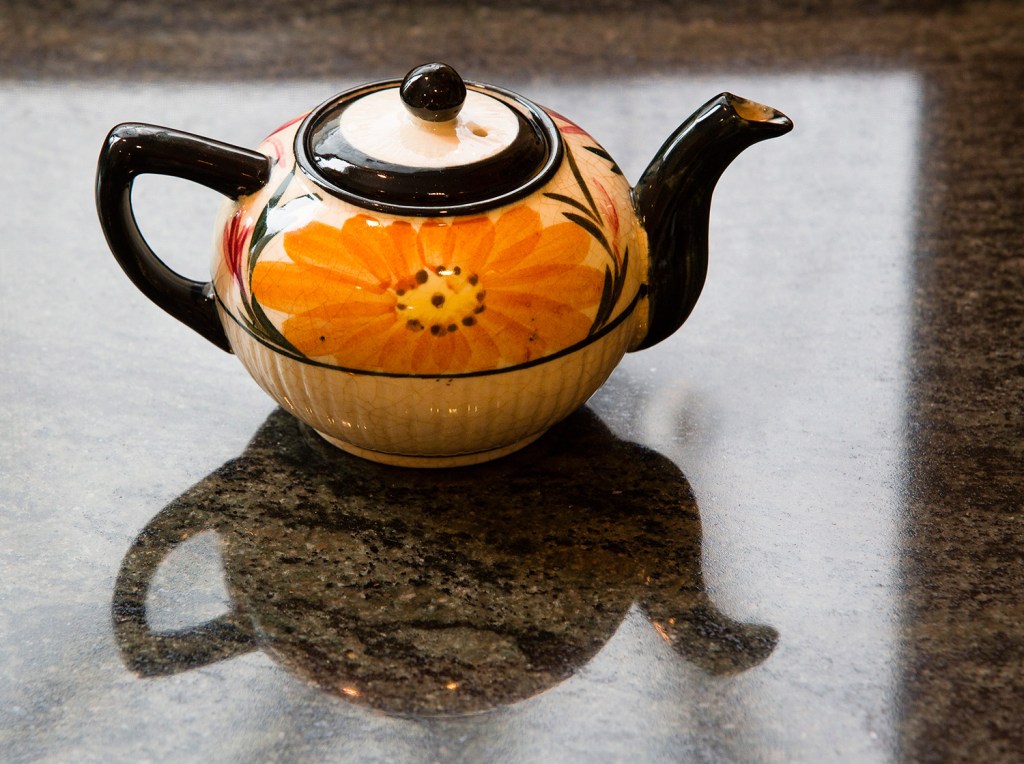
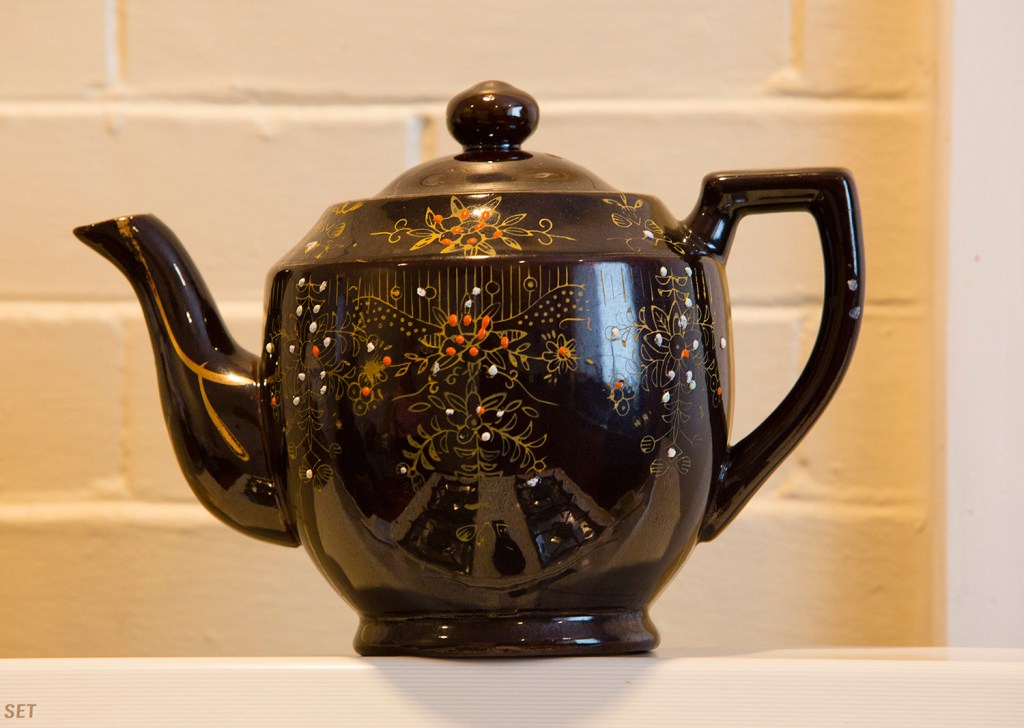

Success. Please wait for the page to reload. If the page does not reload within 5 seconds, please refresh the page.
Enter your email and password to access comments.
Hi, to comment on stories you must . This profile is in addition to your subscription and website login.
Already have a commenting profile? .
Invalid username/password.
Please check your email to confirm and complete your registration.
Only subscribers are eligible to post comments. Please subscribe or login first for digital access. Here’s why.
Use the form below to reset your password. When you've submitted your account email, we will send an email with a reset code.